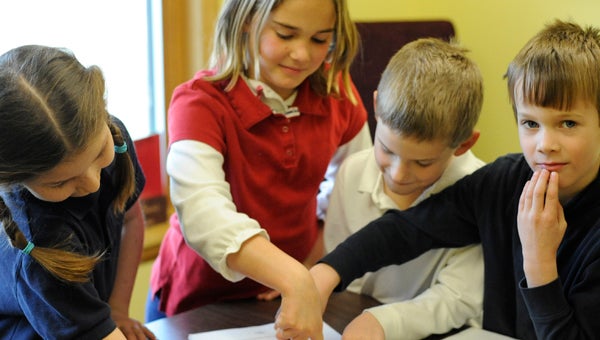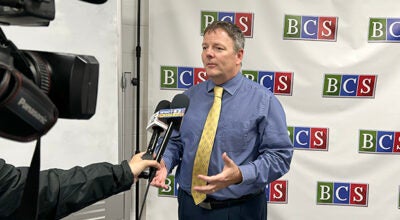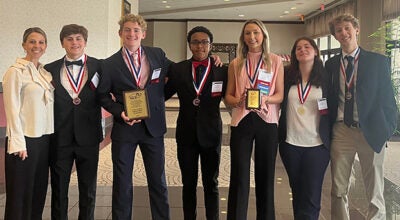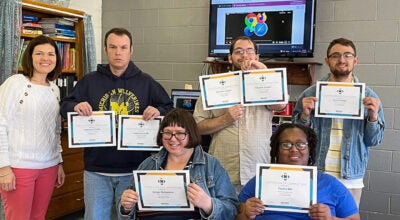FARMERS’ FRIENDS: Students raise funds to help villages across the world
Published 10:16 pm Tuesday, February 18, 2014

VAIL STEWART RUMLEY | WASHINGTON DAILY
THE GIFT THAT KEEPS ON GIVING: Claire Anne Boudreax, Sophie Purser, Caleb Woolard and Andrew Midgett pint out their favorite animals on the list of animals their class bought for Heifer International this Christmas.
Two sheep, four goats, one heifer and two llamas. A flock of chicks, a trio of rabbits and a honeybee hive. A camel, a pig and a water buffalo.
It’s not quite a list of farm animals common to eastern North Carolina — it’s not supposed to be. This list is of animals purchased and donated to farmers across the world through an organization called Heifer International. These animals were bought and gifted by the children of Washington Montessori Public Charter School.
“It’s a very important part of the Montessori curriculum, that we give to others and do service projects,” said Montessori Head of School Jen Hales.
Each year, Washington Montessori students do a joint service project, alternating between a local, national and international charity. Last year, the children exhibited national pride by making stocking for troops stationed overseas. This year, they chose to give the “gift that keeps on giving:” creatures big and small, creatures that can produce milk and honey, provide transportation in some places and wool for clothing in others.
The entire school had a goal to raise $1,500 for the project that started shortly after Thanksgiving. Each class was tasked with setting a fundraising goal then going about hitting that goal, but without simply asking for donations. Instead, students were asked to earn the money they would donate.
“We didn’t want the kids to go to their parents for money—we wanted them to raise money through service,” Hales explained.
Nancy Murray’s class of first through third graders surpassed fundraising expectations in a variety of ways. Claire Anne Boudreaux did chores around the house and arranged her mom’s extensive shell collection. Andrew Midgett said he washed his mother’s car. Caleb Woolard donated the money left by the Tooth Fairy. Sophie Purser and Claire Anne, poster and collection jar in hand, made the rounds of parents in the pickup line nearly every day after school.
As a result, the total amount collected by the school, $2,800, was almost double the original goal. And the children learned many valuable lessons along the way, according to Murray.
“Truly, there were so many lessons that came out of this,” Murray said.
From math problems — setting a goal, then figuring out how much money each child in the class needed to raise — to learning about countries across the world, their geography and climates and which animals may thrive in certain regions. Each child got to know the earlier list of animals pretty well, learning how each can be a contributing part of a village.
Since the project took place during the Christmas season, there was a larger lesson to be learned, as well, according to Murray. She referred to the project as a catalyst: class discussions about why villages would need these animals led to discussions about societal issues everywhere — homelessness, hunger and the importance of helping others.
“I think they really related to that,” Murray said.
They also related to the idea of bunnies and heifers and little chicks being sent around the world in their names. Of the animals, Sophie and Caleb picked goats as their favorite gift, Claire Anne liked the water buffalo (largely because she’d never seen one), and Andrew thought sheep were great because they share their wool.





